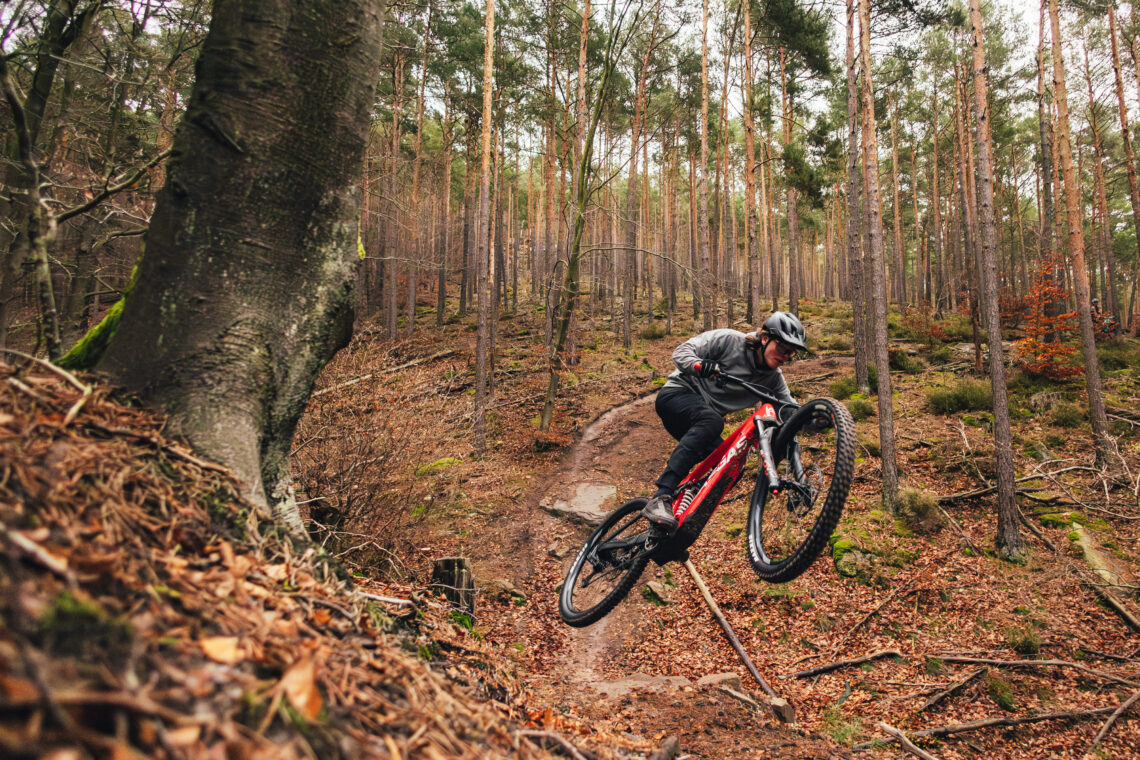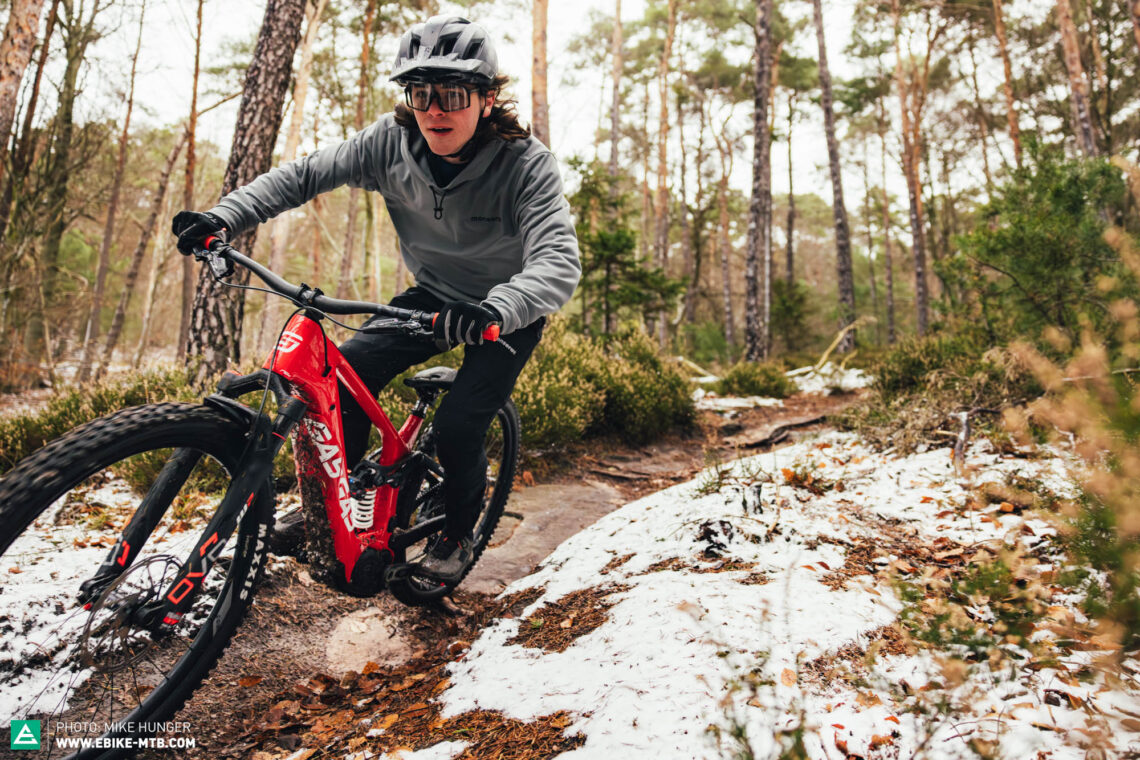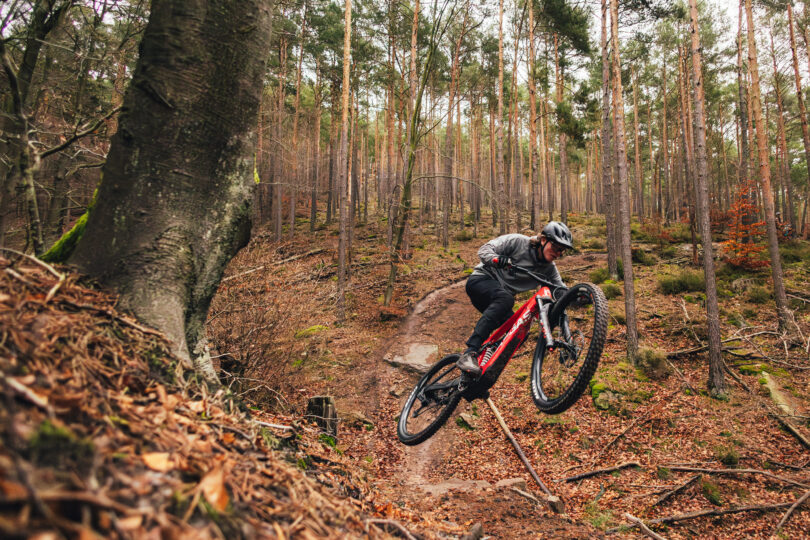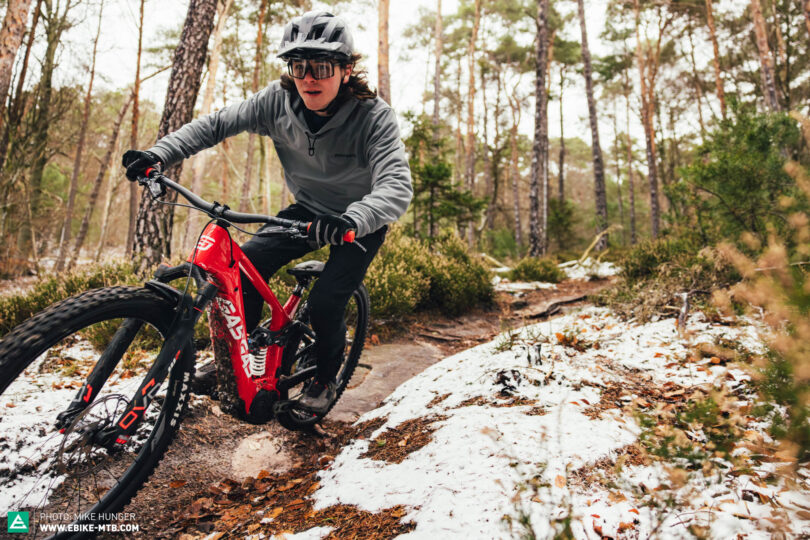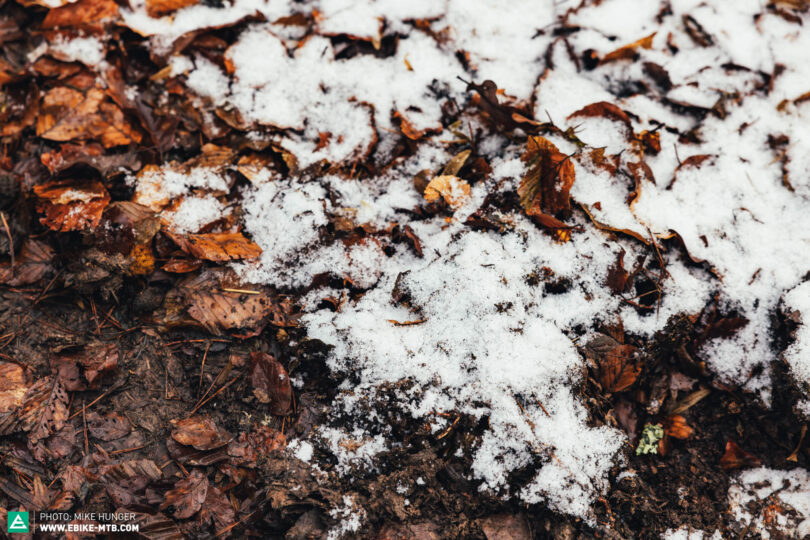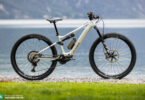With the ECC 6, GASGAS present a new eMTB featuring the SRAM Eagle Powertrain with automatic shifting, and a moto look. It should be capable of tackling anything you throw in its path thanks to 170/160 mm travel, and also perform well at races. We put it to the test to find out.

When we think of GAGAS, the first thing that comes to mind is red motorcycles that race through forests and deserts or fly through the air. After all, the Spanish brand have their roots in the off-road motorcycle sector, and their current range of eMTBs also boasts a distinct moto look. E-mountainbikes are gaining in popularity even among motocross and enduro riders. So, it comes as no surprise that the GASGAS brand have been offering eMTBs for some time now. Their newly introduced eMTBs consist of two different ranges. Although they’re based on the same full carbon frame, they’re targeted at different use cases. Both eMTBs also rely on the newly introduced SRAM Eagle Powertrain motor system. This drive unit from SRAM relies on their wireless Eagle transmission groupset, paired with an in-house motor. The SRAM Eagle Powertrain software enables automatic shifting and a coast-shift function, i.e. shifting without pedalling. But more on that in a moment. We tested the flagship model of the ECC range, the ECC 6, priced at € 9,999. The 24.6 kg eMTB promises to deliver with its racing approach. To that end, it rolls on 29″ wheels and offers 170/160 mm travel front and rear. The MXC is the ECC’s little brother. It’s less race-focused, which should give it a more playful character and make it more fun on a wider range of trails. As such, it’s got slightly less travel, offering 160/140 mm front and rear, and rolls on a 29/27.5″ front and rear mullet wheel setup.
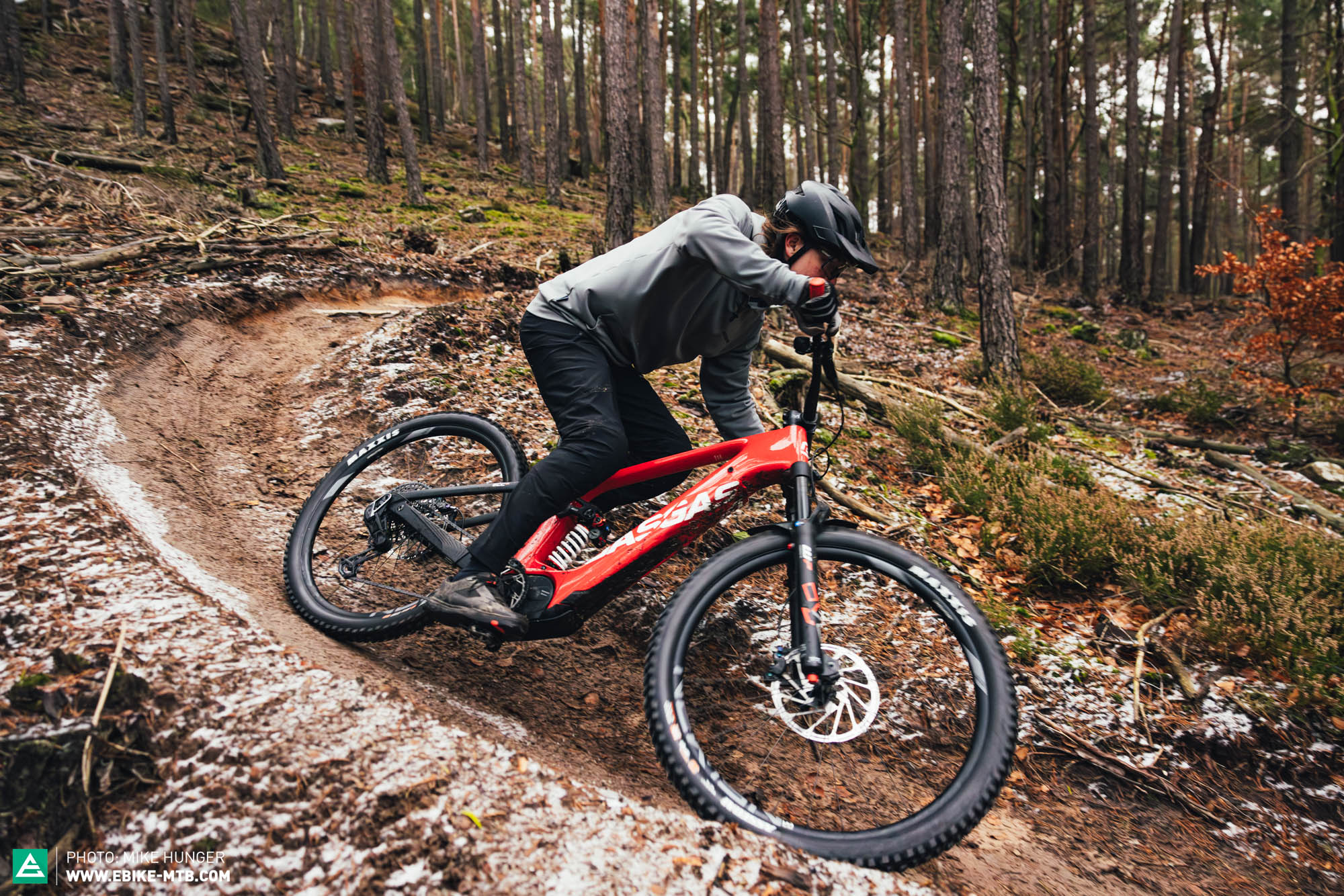
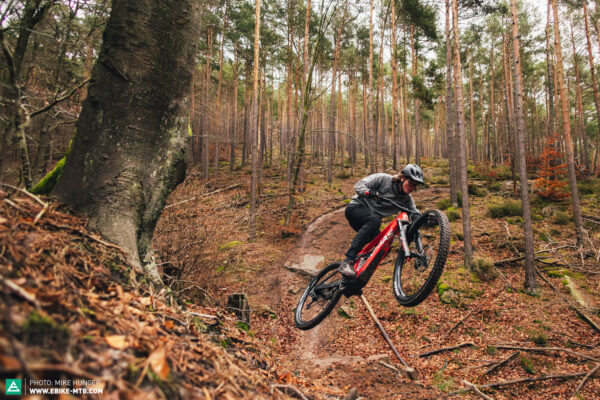
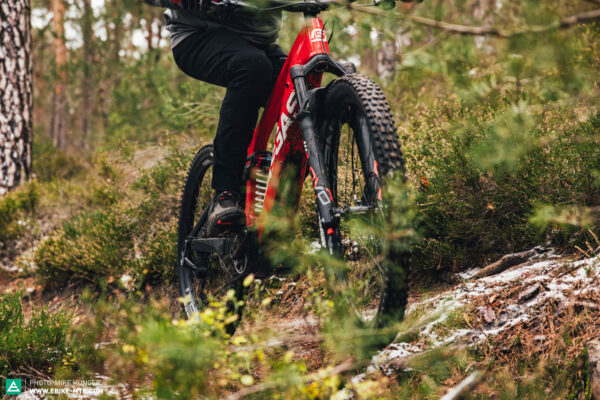
The 2024 GASGAS ECC 6 in detail
The design of the GASGAS pays tribute to their heritage. Nevertheless, they didn’t just design a motocross bike without a fuel tank, but developed a thoroughbred eMTB instead. This is particularly evident when looking at the beautiful, yet beefy frame. The paint job reflects the company roots, featuring their signature red colour and large white GASGAS lettering, almost exactly like on their petrol-powered bikes. The four interchangeable frame covers were also inspired by the motocross look. They’re made of plastic and colour-matched, even bearing the same eye-catching GASGAS lettering. Three of the covers slot into each other, covering the top tube and the sides of the head tube. They are only clipped to the frame and can be removed and replaced without tools. The covers are intended to protect the frame and contribute to the MX look. The fourth frame cover is bolted to the bottom of the down tube and doubles as a battery cover. To remove the battery from the bike, you need a Torx 30 for the battery cover and a 5 mm hex key for the retaining bolt of the battery – annoying. Unfortunately, the covers aren’t attached securely enough and are made of quite soft plastic, allowing them to rattle, though they don’t fall off while riding The covers are red on all models. However, GASGAS are planning to offer different colours so that you can customise the look of the bike. When developing the skid plate, the designers probably got input from the motocross department, consisting of a thick aluminium plate. So there’s no need to worry about the motor when slamming into roots or rocks.

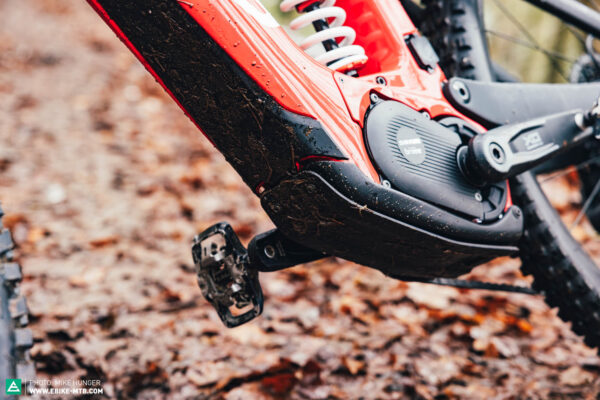
Thanks to the wirelessly controlled dropper post and drivetrain, you’ve only got two brake hoses dangling from the cockpit. This leads to a clean look, which is underlined by the internal cable routing. The rear brake hose enters the frame via a port behind the head tube and remains hidden until it reaches the rear brake calliper. However, the brake hose on our test bike wasn’t clamped down securely enough, which resulted in an annoying rattling sound. Oddly, there is room for two more cables next to the port for the brake hose, while there is no cable inlet port on the right hand side of the frame. In contrast to the flagship build on test, the cables of the mechanical dropper posts of the more affordable models will probably also have to enter the frame on the left. This could result in unusual cable routing as the remote and cable inlet port are on the same side of the frame.
The drive-side chainstay of the GASGAS eMTB comes equipped with a generously sized protector. Even though it does a great job of protecting the paint thanks to its size, it doesn’t dampen noise very effectively since the rubber is quite hard.

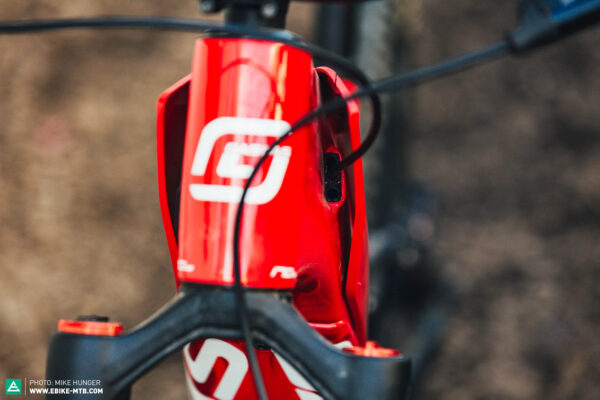
The SRAM Eagle Powertrain system in the 2024 GASGAS ECC 6
The heart of the GASGAS, i.e. the motor system, is provided by the recently introduced SRAM Eagle Powertrain. SRAM haven’t developed the motor from the ground up. Instead, they’ve based their system on the proven Brose Drive S Mag. You can see that this motor has been on the market for a few years, considering its size. It’s larger and chunkier than newer full-power motors. However, due to the motocross look and burly frame, the motor hardly stands out despite the size. Measured against the current competition, the SRAM motor doesn’t have to hide, offering ample support in two different modes: rally and range. You can customise them using the AXS app. We mainly used the highest mode. Powering the motor is a 630 Wh battery, which can be removed out the bottom of the down tube for charging. To indicate the battery status, support mode, and shifting mode, SRAM rely on a small colour display called the SRAM Bridge Display. Since the drivetrain is also supplied by SRAM, you’ve got the benefit of the Auto-Shift and Coast-Shift functions.



The components of the new GASGAS ECC 6
GASGAS sent us the flagship ECC 6 model to review. The suspension is the result of a cooperation between DVO and WP. Both brands have a long history of making suspension. While DVO exclusively make mountain bike forks and shocks, WP is a sister company of GASGAS and specialises in motorcycle suspension. The hardware is supplied by DVO, whereas WP contribute their Cone-Valve technology, which has proven itself in motorcycle racing. This affects the inner workings of the fork and the shock, promising improved handling stability. The 170 mm front travel is managed by a DVO Onyx CV OTT fork, while a DVO Jade X CV Coil shock provides 160 mm travel at the rear.
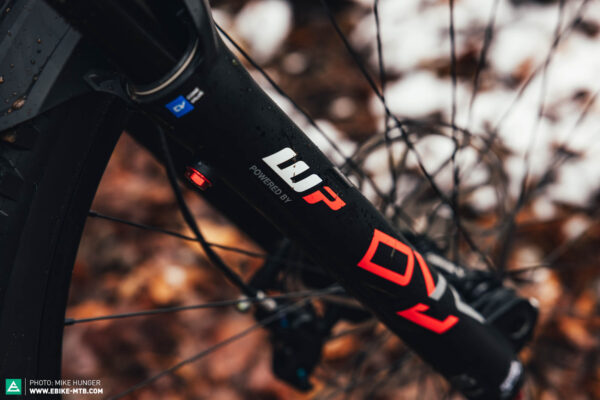

The robust SRAM X0 Eagle Transmission derailleur is bolted directly to the frame without a derailleur hanger. This drivetrain is predestined for the demands of eMTBing as it can shift particularly well under load. The wireless derailleur is powered by the main battery; not by a small external battery as is usually the case. So there’s one less battery to worry about. However, that also means you can only shift gears when the eMTB is switched on. But don’t worry, even if you miscalculate and run out battery power in the middle of nowhere, there’ll be enough residual charge for you to shift gears. That’s thanks to the deep discharge protection feature of the software. Without it, you’d run the risk of deep discharging the battery, which could damage the cells. The wireless RockShox Reverb AXS dropper post also comes from SRAM. Although it can be inserted all the way into the frame, it offers too little drop for a modern eMTB at 150 mm, severely restricting the rider’s freedom of movement.
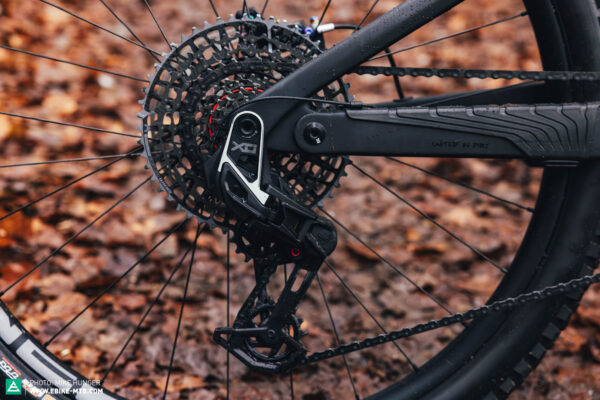
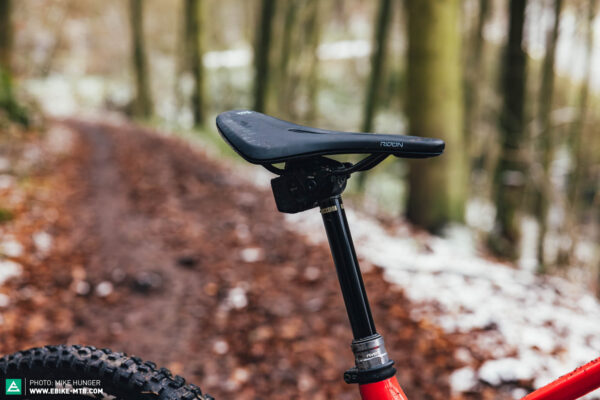
Stopping is taken care of by the powerful SRAM CODE RSC four-piston brakes, combined with a large 220 mm rotor up front and a 200 mm version at the rear. The brake levers are bolted to a NEWMEN Advanced Carbon handlebar, measuring 800 mm in width. Just like the cockpit, the wheelset is sourced from NEWMEN. The sturdy SL E.G. 30 aluminium wheelset is shod with MAXXIS rubber. At the front, you’ve got a MAXXIS ASSEGAI with the EXO+ casing. Thanks to the soft MaxxGrip rubber compound, there’s no shortage of grip. The rear wheel also features a MAXXIS ASSEGAI tire. However, it’s got the thicker Doubledown casing to fend off pinch flats, which makes sense on a eMTB of this calibre. GASGAS have chosen to go with the slightly harder MaxxTerra compound on the rear, favouring decreased rolling resistance and increased durability.

GASGAS ECC 6
€ 9,999
Specifications
Motor SRAM Eagle Powertrain 90 Nm
Battery SRAM Battery 630 Wh
Display SRAM AXS Bridge Display
Fork DVO Onyx D1CV OTT 170 mm
Rear Shock DVO Jade X CV Coil 160 mm
Seatpost RockShox Reverb AXS 150 mm
Brakes Die SRAM CODE RSC-Stealth 220/200 mm
Drivetrain SRAM X0 Eagle Transmission 1x12
Stem Newmen Evolution 40 mm
Handlebar Newmen Advanced 800 mm
Wheelset Newmen Evolution SL E.G. 30 29"
Tires MAXXIS ASSEGAI/ MAXXIS Minion DHRII 2.5"/2.4"
Technical Data
Size S/M M/L L/XL
Perm. total weight 130 kg
Trailer approval no
Kickstand mount no
The suspension of the 2024 GASGAS ECC 6
Attention: it’s about to get complicated! However, we must look at the functions of the suspension. In principle, the Cone-Valve technology works like a blow-off valve on hard impacts. With big hits, WP aim to increase the oil flow. Doing so should improve the response and dampen impacts more easily, which leads to improved handling stability. With the high-speed compression setting on the fork and shock, you can adjust the Cone Valve to suit your needs.
However, in addition to the standard high- and low-speed compression, and rebound setting, the fork also has an OTT setting. OTT stands for “Off The Top”, and you can use it to adjust the preload of the negative coil spring. This allows you to adjust the first 30 mm of travel regardless of the air pressure. At a greater preload, there’s less force required to get the fork to cycle through the initial travel, allowing it to respond more sensitively to small bumps without negatively affecting mid-stroke support. The OTT setting certainly makes a noticeable difference on the trail. Nevertheless, the fork’s performance didn’t match that of a RockShox ZEB Ultimate or a FOX 38 with the GRIP2 damper in our first field tests, unfortunately.
The shock also lets you adjust the high- and low-speed compression, and rebound settings. In addition, you will find a valve by the reservoir, which is rather unusual for a coil shock. This allows you to adjust the pressure of the bladder to suit your preferences. Put simply, the bladder acts like a balloon that pressurises the oil in the shock. By adjusting the pressure, you can adjust the feeling of the damper. With all these adjustment options, fine-tuning the suspension is quite complicated and requires patience, but it’s not something you’ve got to do before each ride. Help is provided by the DVO Setup Guide, as well as our how-to guide on the perfect suspension setup.
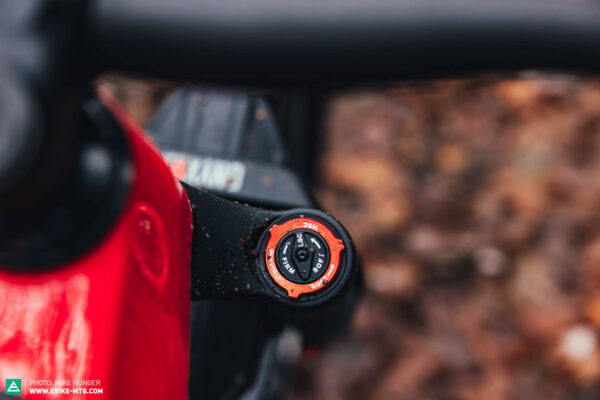
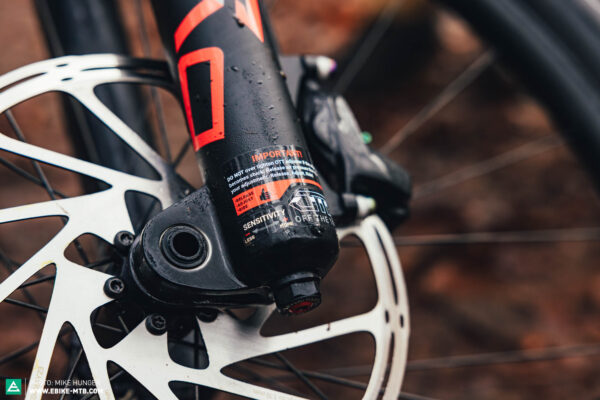
The different build variants of the 2024 GASGAS ECC
In addition to the ECC 6 on test, GASGAS offer two other ECC build variants: the ECC 5 for € 8,999, and the ECC 4 for € 7,999. All ECC models rely on the same carbon frame, though in a different colour. In terms of the builds, the MXC range is very similar to the ECC models. It also comes in three different variants: MXC 6, MXC 5 and MXC 4. The biggest difference between the ECC and the MXC models, apart from a smaller 27.5-inch rear wheel and slightly reduced travel, is that they come with an air instead of a coil shock. Even the price of the corresponding models is identical.
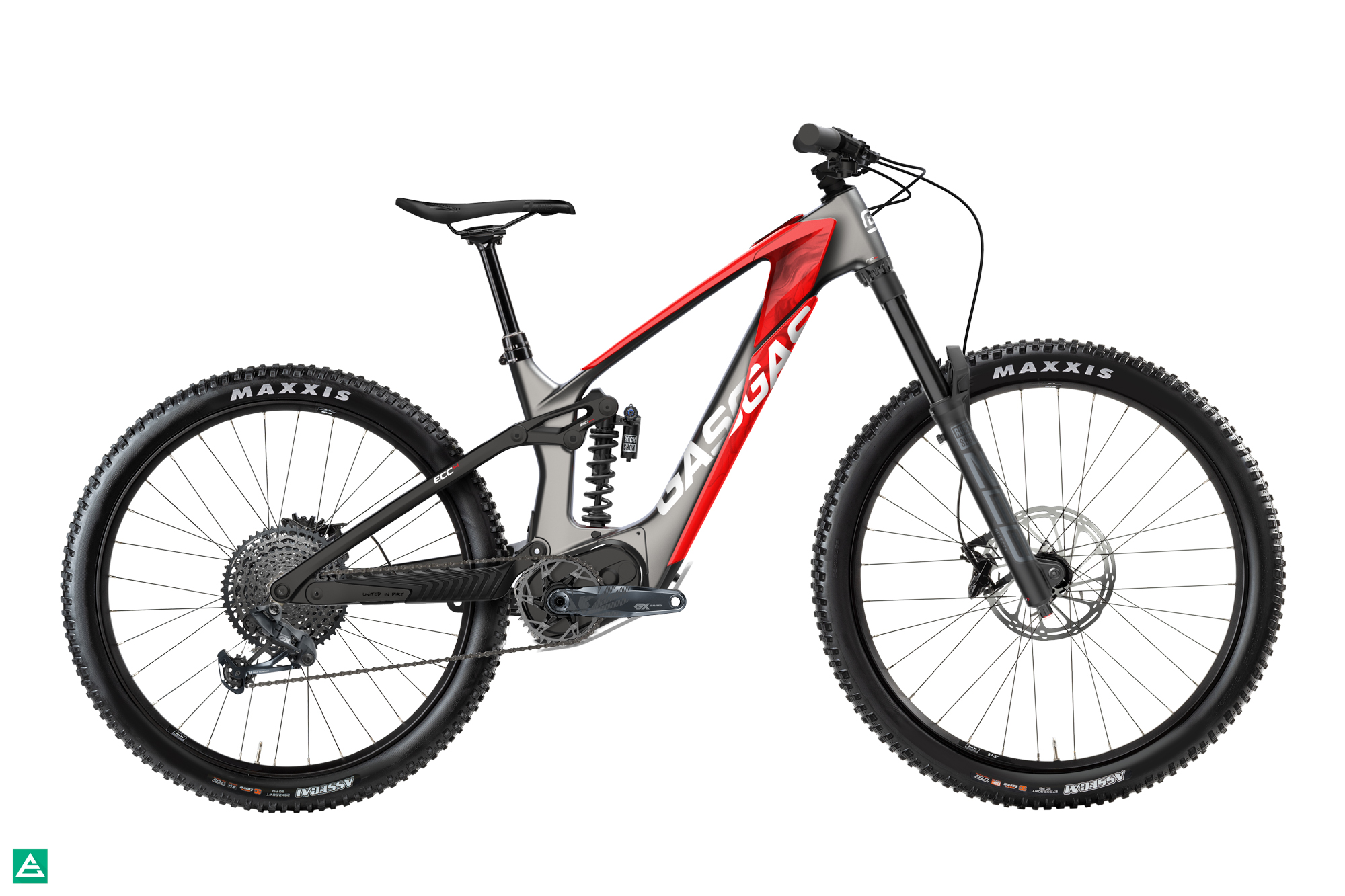
GASGAS ECC 4
€ 7,999
Specifications
Motor SRAM Eagle Powertrain 90 Nm
Battery SRAM Battery 630 Wh
Display SRAM AXS Bridge Display
Fork RockShox ZEB Select+ 170 mm
Rear Shock RockShox Super Deluxe Select+ 160 mm
Seatpost GASGAS Pro
Brakes SRAM DB8 200/200 mm
Drivetrain SRAM GX Eagle 1x12
Stem GASGAS 35 35 mm
Handlebar GASGAS Riser 35 mm 780 mm
Wheelset MACH 1 Trucky 30 29"
Tires MAXXIS ASSEGAI/ MAXXIS Minion DHRII 2.5"/2.4"
Technical Data
Size S/M M/L L/XL
Perm. total weight 130 kg
Trailer approval no
Kickstand mount no
The entry into GASGAS’s new ECC range starts with the ECC 4. Together with the MXC 4, these are their only eMTBs featuring the SRAM Eagle Powertrain system paired with a mechanical SRAM drivetrain. This eliminates the Auto- and Coast-Shift functions, which are exclusive to the wireless SRAM Transmission drivetrain. The ECC 4 is also the only one of the three ECC models from GASGAS that comes with RockShox suspension. Up front, you get a RockShox ZEB Select+. It’s got the same damper as the Ultimate model and thus delivers almost the same performance – it simply isn’t as widely adjustable as the DVO models. The 160 mm of rear travel is managed by a RockShox Super Deluxe Coil shock.
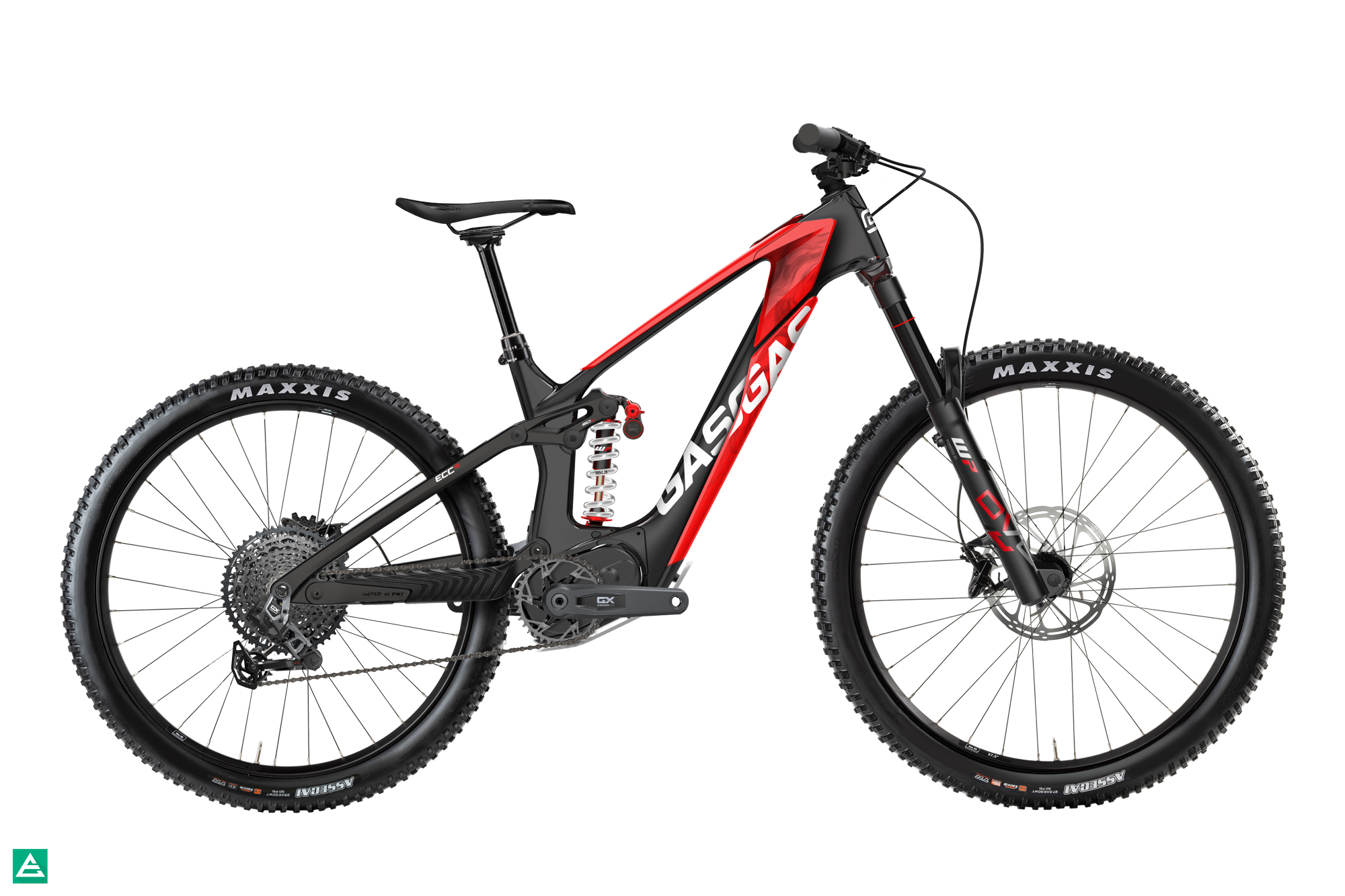
GASGAS ECC 5
€ 8,999
Specifications
Motor SRAM Eagle Powertrain 90 Nm
Battery SRAM Battery 630 Wh
Display SRAM AXS Bridge Display
Fork DVO Onyx D1CV SL 170 mm
Rear Shock DVO Jade X CV Coil 160 mm
Seatpost GASGAS Pro
Brakes SRAM G2 RS 200/200 mm
Drivetrain SRAM GX AXS Eagle Transmission 1x12
Stem GASGAS 35 35 mm
Handlebar GASGAS Riser 35 mm 780 mm
Wheelset MACH 1 Trucky 30 29"
Tires MAXXIS ASSEGAI/ MAXXIS Minion DHRII 2.5"/2.4"
Technical Data
Size S/M M/L L/XL
Perm. total weight 130 kg
Trailer approval no
Kickstand mount no
The ECC 5 variant slots in between the ECC 4 and the ECC 6 and is priced accordingly at € 8,999. For that you get almost the same suspension as on the flagship model. The only difference is that it relies on the slightly more affordable DVO Onyx D1CV SL fork. The SL stands for Super Light and refers to the air spring. The fork’s internals are somewhat lighter, and the OTT adjustment is omitted. Shifting is taken care of by a wireless SRAM Eagle GX transmission drivetrain, which supports the Auto-Shift and Coast-Shift functions. Keeping your speed in check on the ECC 5 are the underpowered SRAM G2 four-piston brakes. They offer little stopping power and aren’t reliable enough on long descents. Unfortunately, the 220 mm and 200 mm brake rotors at the front and rear can’t entirely compensate for this.
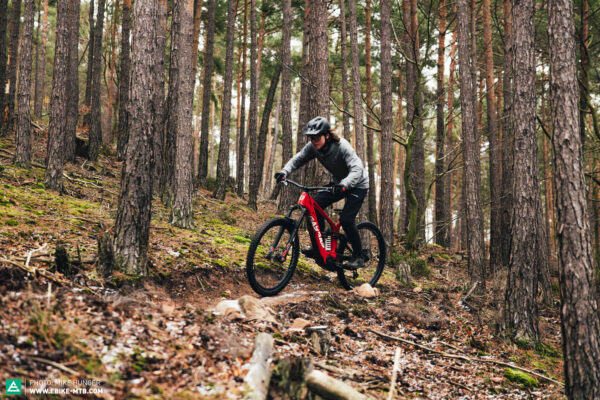

The geometry of the 2024 GASGAS ECC
GASGAS offer the ECC models in three sizes: S, M, and L. The reach of the size M on test is a whopping 475 mm; about as long as many other size L bikes. The jumps in reach are also quite large at about 25 mm between sizes. That way GASGAS covers a wide range of rider sizes, though it also increases the likelihood of being caught between two sizes, neither of which fit. The chainstays of the size S already measure a considerable 461 mm, and they grow by a further 4 mm per size. This should ensure consistent handling across all sizes. The long reach and chainstays result in a long wheelbase. At 64°, the head angle is pretty much bang in the middle of what you’ll currently find on the market for big-hitting eMTBs – not too steep nor too slack. The seat tube in size S is very short at just 400 mm, which should please short riders. However, it grows by 40 mm for size M, while the size L seat tube is as much as 70 mm longer – the 440 mm seat tube on the size M is still acceptable, but 470 mm is too long for a size L bike. In combination with the limited travel of the dropper post, this severely restricts your freedom of movement. So, if you find yourself between two sizes, we would recommend sizing down.
| Size | S/M | M/L | L/XL |
|---|---|---|---|
| Top tube | 588 mm | 613 mm | 638 mm |
| Seat tube | 400 mm | 440 mm | 470 mm |
| Head tube | 115 mm | 130 mm | 145 mm |
| Head angle | 64° | 64° | 64° |
| Seat angle | 74,7° | 75,2° | 75,5° |
| Chainstays | 461 mm | 465 mm | 469 mm |
| BB Drop | 31,5 mm | 31,5 mm | 31,5 mm |
| Wheelbase | 1.257 mm | 1.289 mm | 1.325 mm |
| Reach | 450 mm | 475 mm | 500 mm |
| Stack | 649 mm | 663 mm | 676 mm |
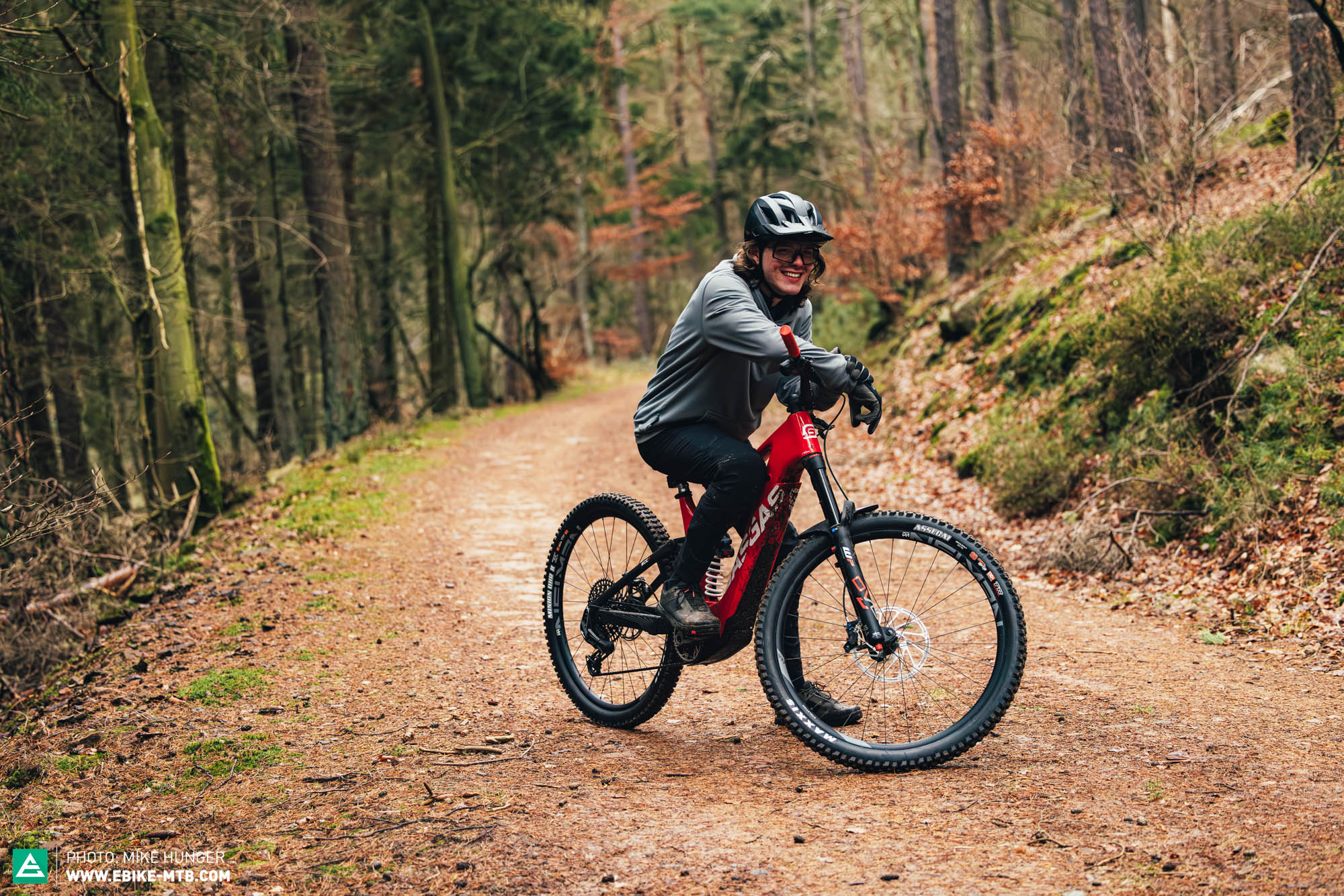
The 2024 GASGAS ECC 6 on the trails
Hitting the trails with the GASGAS ECC 6 for the first time, you’ll notice the tall front end, resulting in an upright and comfortable riding position. This allows you to stay comfy on long rides. That said, the riding position is a bit hand-heavy due to the long reach, which keeps the front wheel weighted on the climbs. As such, the front wheel stays planted, even when things get steep. The rear end bobs slightly as you pedal, thereby providing ample comfort. We never felt the need to lock it out even on longer climbs, which wouldn’t have been possible anyway due to the lack of that option. The powerful SRAM Eagle Powertrain motor helps you get up steep chutes with ease. Thanks to the Auto-Shift function, you can discuss your upcoming bike trip to Spain with your riding buddy without distraction as you cruise to the summit on forest service roads.
While it makes for relaxed riding on easy terrain, it proves to be more of a hindrance when things get more demanding. The Auto-Shift function gets overwhelmed on steep and technical climbs, occasionally shifting into inappropriate gears. That’s because the algorithm can’t look ahead and only acts on your current speed and pedalling cadence. For example, the system will shift into a higher gear on a descent, not knowing that this is followed by a sudden steep climb with a tight corner, for which you need a much easier gear, unable to shift back fast enough. While the rear end bobs slightly on service road climbs, you benefit from sensitive rear suspension when the terrain gets more technical. As such, it provides plenty of traction to conquer any climb.
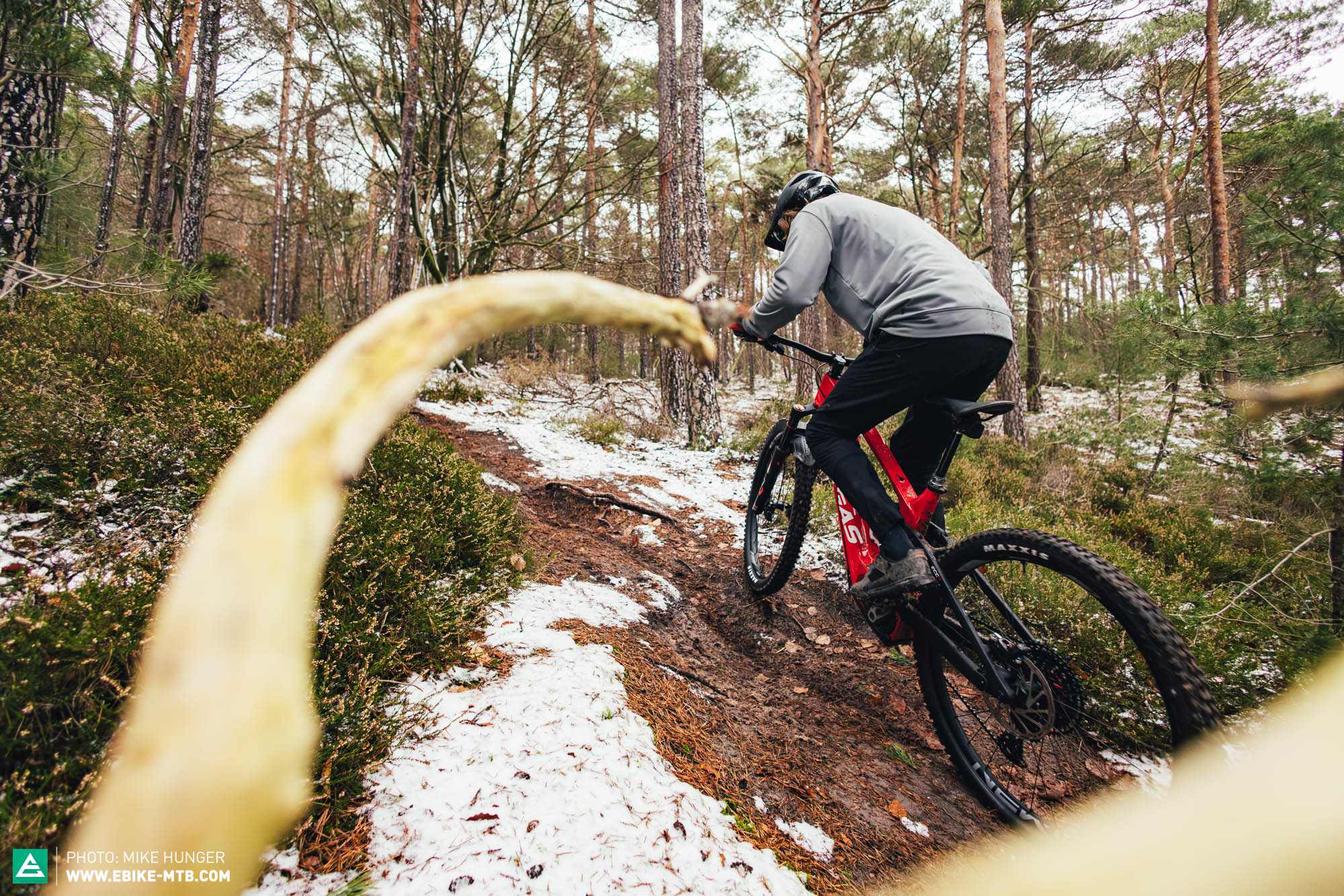
While taking a short break at the trailhead to finish your discussion about your bike trip to Spain, we recommend deactivating the Auto-Shift mode. If you leave it activated, the derailleur will shift back and forth according to your speed. This is somewhat annoying, as the motor of the rear derailleur emits a slight whizzing noise every time it shifts. But what’s much worse is that the automatic shifting can’t always catch up when you suddenly scrub off a lot of speed, leaving you in the wrong gear. Similar to the scenario mentioned above, if you encounter a tight corner after a fast section and you want to pedal out of it, you’ll find yourself in a much too heavy gear. The Coast-Shift function offers a lot more advantages on the trail. It allows you to shift gears without having to pedal and thus keep your cranks in the horizontal position, which is where you’re most stable and have the most ground clearance. As long as the rear wheel is spinning, you can shift into the most suitable gear for an approaching obstacle. You can do so even while you’re ploughing through a rock garden.
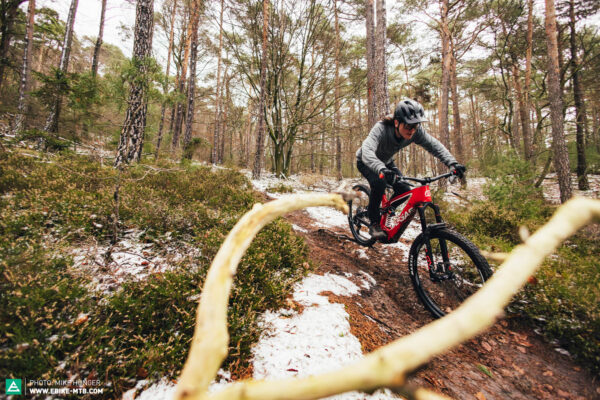
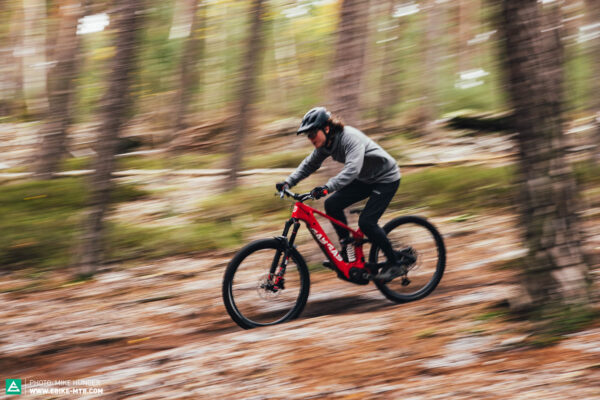
As you follow gravity’s call, the tall front end will make you feel nicely integrated with the bike, thereby boosting your confidence. That helps beginners as well as more advanced riders. On the flip-side, that also means you must actively weight front wheel through corners so that it doesn’t wash out from under you. On tight switchbacks, getting the bike around the corners requires a lot of input from the rider. This is partly due to the expansive chainstays and the resulting long wheelbase. The soft suspension doesn’t help either as it absorbs much of your input, requiring you to work even harder. This makes pumping the bike through berms and rollers on a flow trail particularly demanding. You will feel over-biked and unable to generate a lot of speed. Doubling two rollers on a flow trail or boosting off a small slip also requires plenty of effort with the suspension just sucking up most of your energy. But once you’ve got the bike airborne, it feels composed and stable, flying steadily. Upon landing, the eMTB offers ample reserves, even if you overshoot your target. This stability and composure instils you with loads of confidence on high-speed sections. The suspension just keeps the wheels stuck on the ground. Unfortunately, it offers little in the way of feedback, so you’re often left guessing about what’s happening underneath you. On the one hand, this is good for more passive riders who just let go of the brakes and hope for the best, but it makes an active riding style difficult to maintain for advanced riders, especially for those racing against the clock.

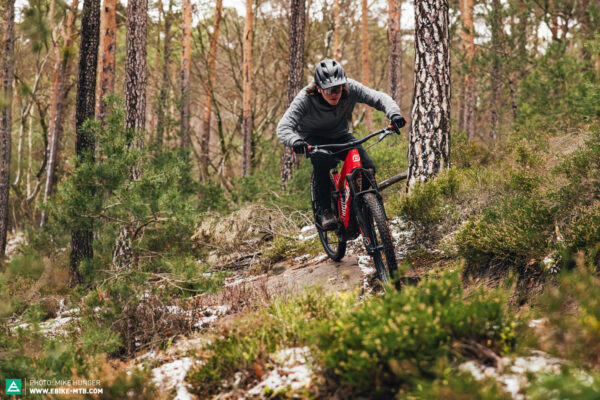
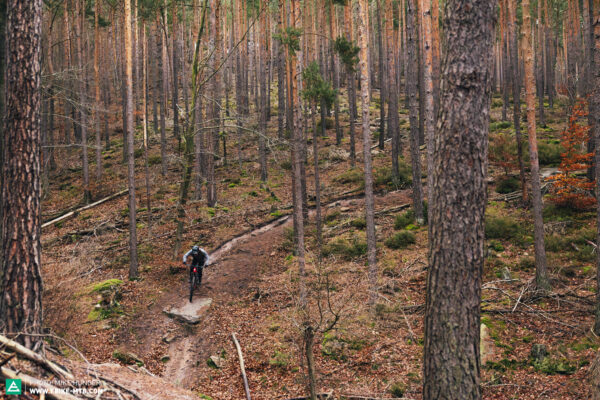
Who is the 2024 GASGAS ECC 6 for?
The design language of the GASGAS ECC 6 is clearly aimed at fans of enduro and motocross sports. On top of that, the bike should appeal to beginners with its confidence inspiring handling. Less experienced riders who enjoy tackling longer tours will also enjoy the GASGAS ECC 6. In situations like these, the bike delivers plenty of riding comfort. However, advanced riders and racers will want more support from the suspension and more agile handling.
Our conclusion on the 2024 GASGAS ECC 6
Contrary to GASGAS’ claims, the new ECC 6 is not a race bike. For that, the eMTB lacks the required support and agility. However, thanks to the tall front end, it’s highly confidence inspiring, which is especially useful for beginners. The GASGAS is a joy to ride on extended tours thanks to the plush suspension and automatic shifting, though the latter quickly reaches its limits when things get technical, unfortunately.
Tops
- composed handling
- confidence inspiring
- polarising design
Flops
- Auto-Shift doesn’t work in technical terrain
- little support from the suspension
- brake hose and frame covers rattle
- cumbersome battery removal
For more information, visit GASGAS.com
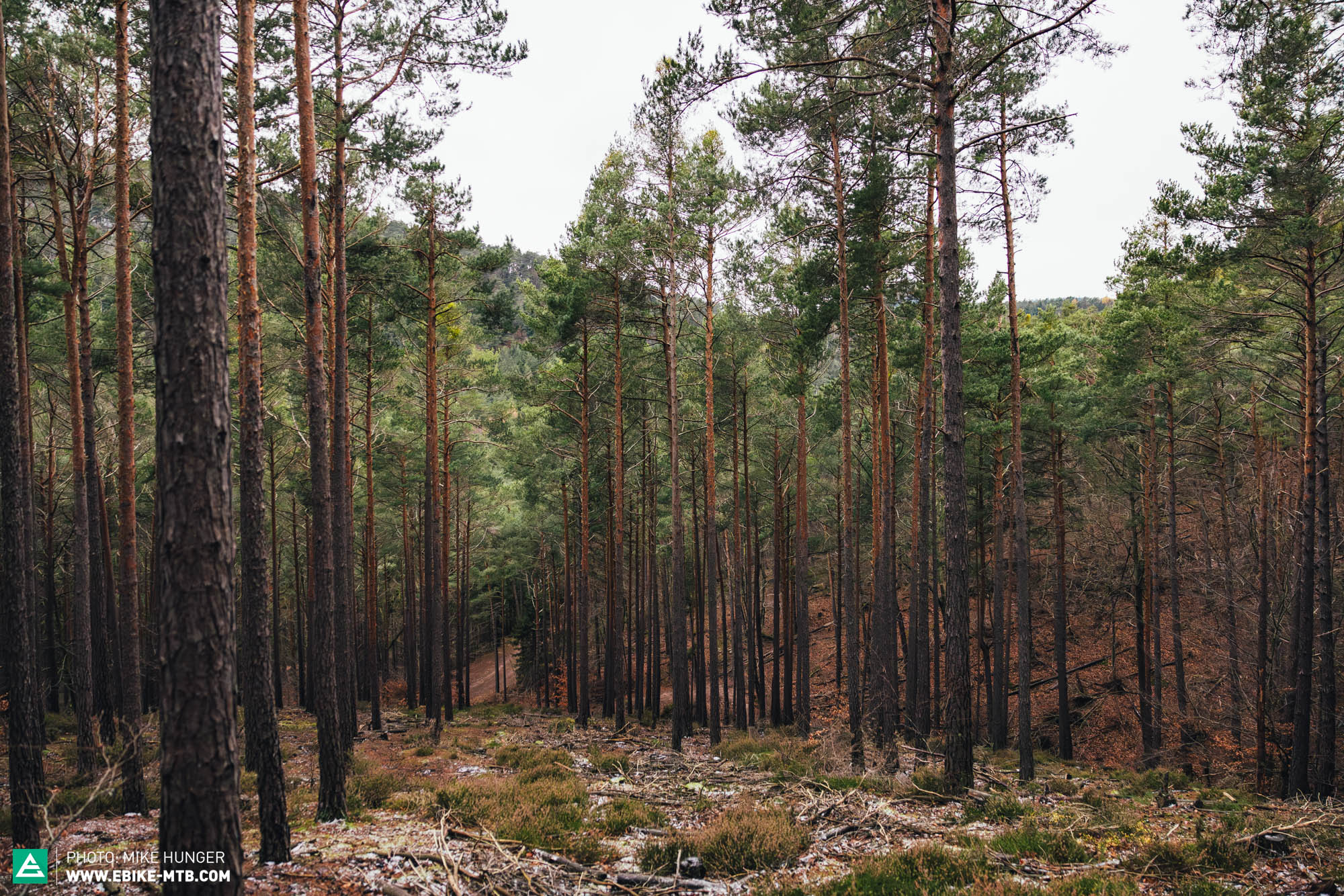
Did you enjoy this article? If so, we would be stoked if you decide to support us with a monthly contribution. By becoming a supporter of E-MOUNTAINBIKE, you will help secure a sustainable future for high-quality cycling journalism. Click here to learn more.
Words: Sebastian Dirscherl Photos: Mike Hunger




